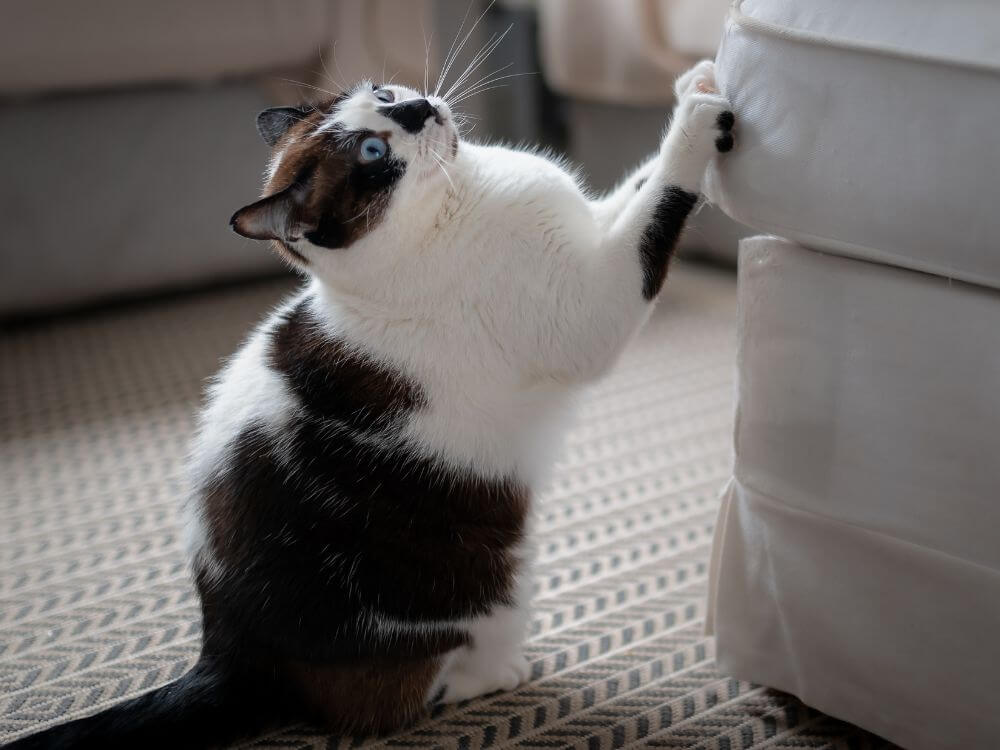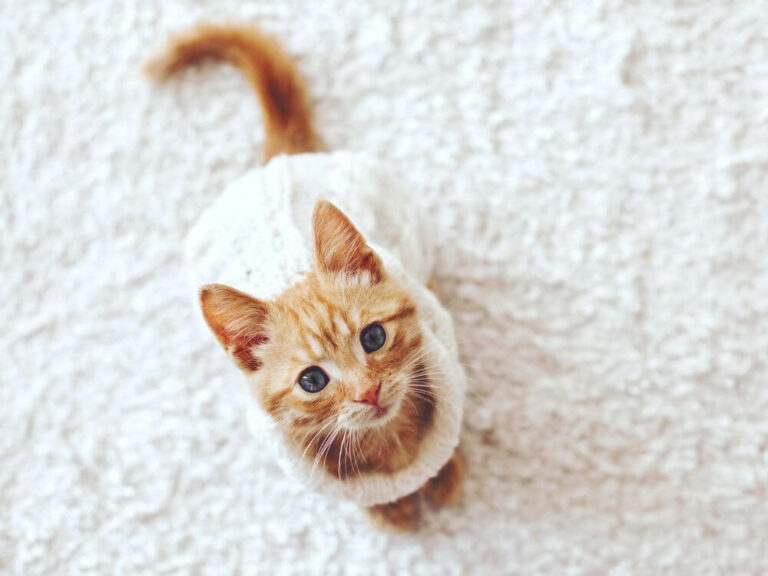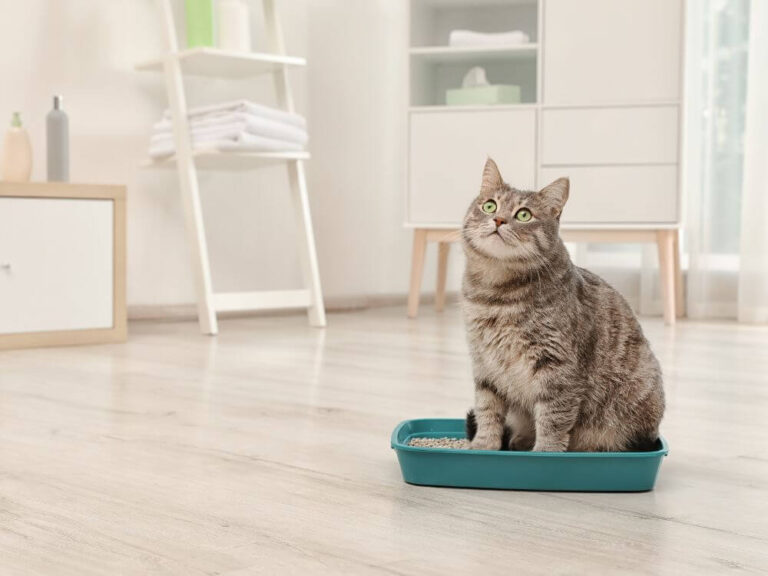How to Prevent Your Cat from Scratching New Furniture

Now that we understand from the last article why cats scratch, the next step is to explore how to prevent your new furniture from becoming your cat’s favorite scratching post. While you can’t stop your cat from scratching, you can redirect this behavior to more appropriate surfaces and protect your belongings.
Provide Scratching Alternatives
One of the most effective ways to prevent your cat from scratching new furniture is to offer appropriate alternatives. Cats will scratch, and the goal is to give them something more desirable than your couch or chair.
1. Invest in Scratching Posts
Scratching posts are a must-have for any cat owner. These posts provide a suitable surface for cats to scratch without damaging furniture. When choosing a scratching post, consider the following:
- Material: Most cats prefer sisal fabric, but some may enjoy cardboard or carpeted posts.
- Height: The post should be tall enough for your cat to stretch out fully. A short post may not satisfy their need for a full stretch.
- Sturdiness: Cats like to feel resistance when they scratch, so make sure the post is stable and doesn’t wobble.
Place the scratching post near the new furniture your cat is targeting. Cats often prefer to scratch in certain areas, so positioning the post close to these spots will encourage them to use it.
2. Provide Variety
Not all cats like the same materials. Some may prefer vertical scratching surfaces, while others enjoy horizontal ones. Offering a variety of textures and post types, such as floor scratchers, wall-mounted scratchers, and tall vertical posts, will cater to your cat’s individual preferences. The more options they have, the less likely they are to target your furniture.
3. Attract Your Cat to the Scratching Post
If your cat is hesitant to use the scratching post, you can make it more enticing by sprinkling catnip on the surface or using interactive toys to draw their attention to it. Some cats will immediately gravitate toward a new scratching post, while others need a bit of encouragement.
Once your cat starts using the scratching post, reinforce the behavior with positive reinforcement. Reward them with treats, praise, or playtime to build a positive association with the post.
Protecting Your Furniture
While you work on redirecting your cat’s behavior to appropriate surfaces, you can take several steps to protect your new furniture from scratching damage.
1. Use Furniture Protectors
Furniture protectors, such as clear plastic covers or sticky tape, can deter cats from scratching. The smooth surface of plastic is unpleasant for cats to scratch, and double-sided sticky tape can create a texture that they dislike on their paws.
2. Cat Deterrent Sprays
Another option is to use cat-safe deterrent sprays that have scents cats dislike, such as citrus or certain herbs. These sprays are undetectable to humans but can help keep cats away from furniture. Ensure the product is safe for your specific furniture material before use.
3. Use Slipcovers
If your cat is particularly insistent on scratching a specific piece of furniture, covering it with a slipcover or blanket may provide temporary protection. Choose a fabric that is difficult for your cat to sink its claws into, such as canvas or denim. This can be an effective short-term solution while you train your cat to use scratching posts.
Train Your Cat with Patience and Consistency
Consistency is key when it comes to training your cat to avoid scratching furniture. It’s important to remember that cats respond better to positive reinforcement than punishment. Never scold or physically discipline your cat for scratching furniture, as this can increase stress and exacerbate the behavior.
Instead, focus on rewarding good behavior and using gentle deterrents to redirect their scratching. With time and patience, your cat will learn to associate the appropriate surfaces with scratching and avoid your furniture.
Trim Your Cat’s Claws Regularly
Keeping your cat’s claws trimmed can reduce the damage they inflict on your furniture. Trimming should be done carefully to avoid cutting into the quick, the sensitive part of the claw. If you’re unsure how to trim your cat’s claws, consult your veterinarian or a professional groomer for guidance.
Consider Soft Nail Caps
Soft nail caps, also known as claw covers, are a humane and temporary solution for protecting your furniture. These small, rubbery caps are glued onto your cat’s claws and can prevent them from causing damage when they scratch. The caps typically last for 4 to 6 weeks before needing to be replaced.
Enrich Your Cat’s Environment
Sometimes, a cat’s furniture-scratching behavior is a sign of boredom or a lack of stimulation. Providing ample mental and physical enrichment can reduce the need for your cat to scratch out of frustration or anxiety.
1. Interactive Playtime
Engage your cat in daily play sessions with interactive toys, such as feather wands or laser pointers. This allows your cat to burn off excess energy and reduces stress, which can lessen the likelihood of destructive scratching.
2. Environmental Enrichment
Make your home an exciting place for your cat by offering a variety of toys, puzzle feeders, and climbing structures. Cats love to explore and climb, so creating vertical spaces for them with cat trees or shelves can help them feel more engaged and reduce furniture-scratching tendencies.
Conclusion: Create a Scratch-Free Environment
Preventing your cat from scratching new furniture may seem challenging, but with the right approach, it’s entirely possible. By providing alternative outlets like scratching posts, using deterrents, and ensuring your cat feels secure in their environment, you can protect your home and keep your feline friend happy. Patience and consistency are key—over time, your cat will learn to respect the boundaries you’ve set. Embrace these strategies, and you’ll enjoy a scratch-free home without sacrificing your cat’s natural instincts.




